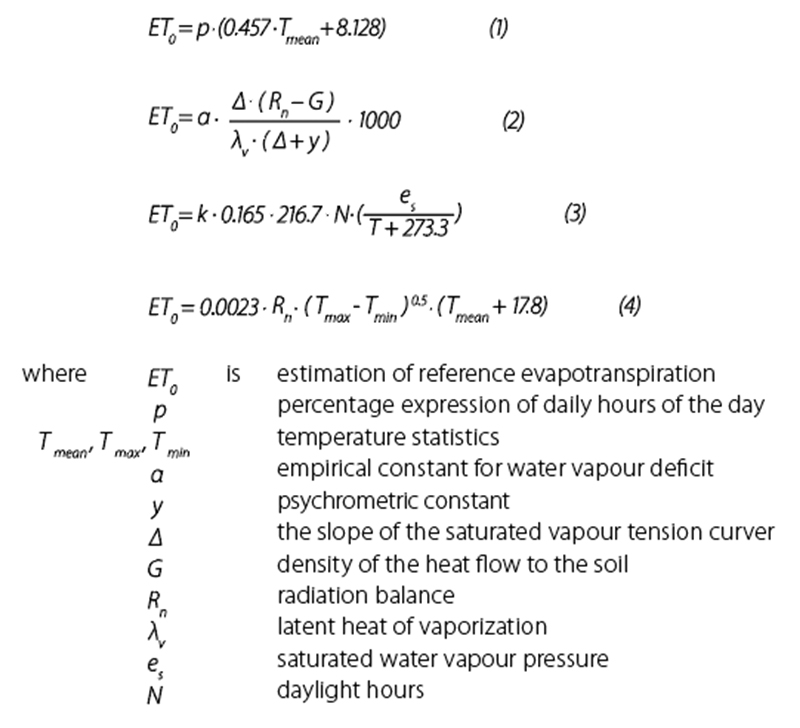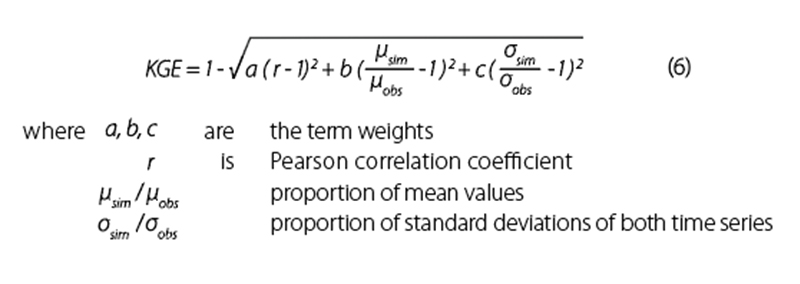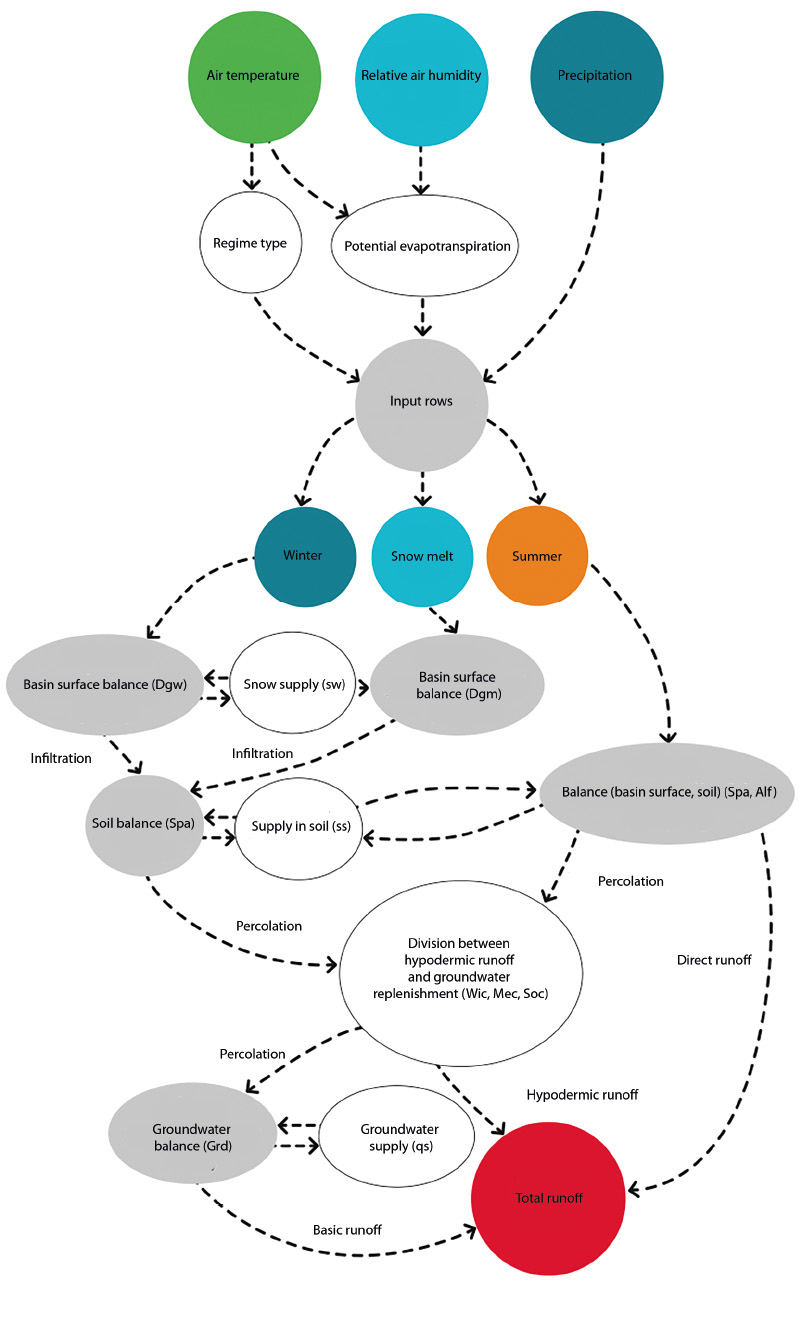BILAN is a comprehensive conceptual model in a daily/monthly structure (the diagram is shown in Fig. 1), simulating the components of the hydrological balance in a basin. Although its development was started at TGM WRI at the beginning of 1990s, it is a model that is still used as a standard in the Czech Republic and remains accessible to the lay and professional public; for example, it is an integral part of the HAMR application / system solution [1], but has also been used elsewhere [2–4]. The main advantages of the model, compared to other solutions, include internal calibration algorithms, the possibility of direct input of water use data, and low computational complexity suitable for variant simulations (e.g., the effects of climate change on water regime). The last text dedicated to the structure of the BILAN model was published in VTEI on 7 August 2015 [5], so we think it is a good time to document that this simulation tool is keeping up with the present and the model structure is being continuously modified based on research and societal requirements. Nowadays, the BILAN model is also used for projects such as Centrum Voda, PERUN, and Interreg CE Thaya.
Naturally, over time, general trends in software development and hydrological modelling have changed, as a result of which the original code was rewritten from the Object Pascal language to C++ and further expanded with a package containing an application program interface to the R environment. A graphical user interface and a web environment were also added at http://bilan.vuv.cz. The user manual and documentation for the model can also be found here. The package for R was originally housed in the Comprehensive R Archive Network (CRAN) repository. Recently, it was decided to establish a versioning system for storing the source code of the software directly hosted on the TGM WRI servers. This solution comes from GitLab Inc. and uses today’s standard secure source code management technology – Git. It is possible to find the BILAN model repository at https://git.vuv.cz/hydrology-department/bilan. It is also possible for any user to install the R package directly from this website.
BILAN is currently (at the time of writing) in version 2022-07-22 and contains:
- Alternative options for estimating potential evapotranspiration in/for the basin using a smaller or larger number of input variables. These include, for example, daily temperature minimums and maximums, the length of the day or the solar radiation constant, the psychrometric constant or the tension of saturated water vapour. Estimation of potential evapotranspiration is usually the first step in simulating the water balance in a basin; therefore, its accuracy has a direct and fundamental impact on the success of determining the remaining components of the balance.
- The implemented equations that define these estimates are known by the following names: Blaney-Criddle (1) [6], Priestley-Taylor (2) [7], Hamon (3) [8], and Hargreaves-Samani (4) [9]. Until now, a method based only on average daily temperature and latitude was available in the model [10]. These techniques can either provide more adequate values, especially if the quantities mentioned are obtained by precise measurement, or offer greater variability of the required inputs. In addition, their implementation is suitable for comparative studies of models that work with comprehensive data sets, for example from the MOPEX or CANOPEX projects, in which daily temperature ranges are more often available than average daily temperatures.
Complete list of equations:

- Kling-Gupta efficiency (KGE) – composite calibration criterion [11]. KGE has been relatively widely used in hydrology in recent years because it addresses the shortcomings of criteria using mean squared error. This is also the case of the better-known and long-used Nash-Sutcliffe efficiency criterion [12]. The mean squared error is divided here into three diagnostically significant components – correlation, systematic error, and variability. The relative importance of these components can be adjusted using the weights that are assigned to the internal term, with the default values being equal. In general, the KGE equation (5) contains a correlation term r between two time series, then a member α to assess the systematic error, and finally a member β, which compares the mutual variability.
There are multiple implementations of this criterion. In the BILAN model (6), a following variant is used:
In the coming years, the https://git.vuv.cz domain will be used to make available other open-source software originating from the research activities of the TGM WRI hydrology department. By the end of 2022, the graphic version of the BILAN model will also be moved and the same modifications will be made, which will also be transitioned to the new, sixth version of the Qt framework.
Fig. 1. Diagram describing the structure of the BILAN model in a monthly calculation step
The article was translated on the basis of the Czech original by Environmental Translation Ltd.



